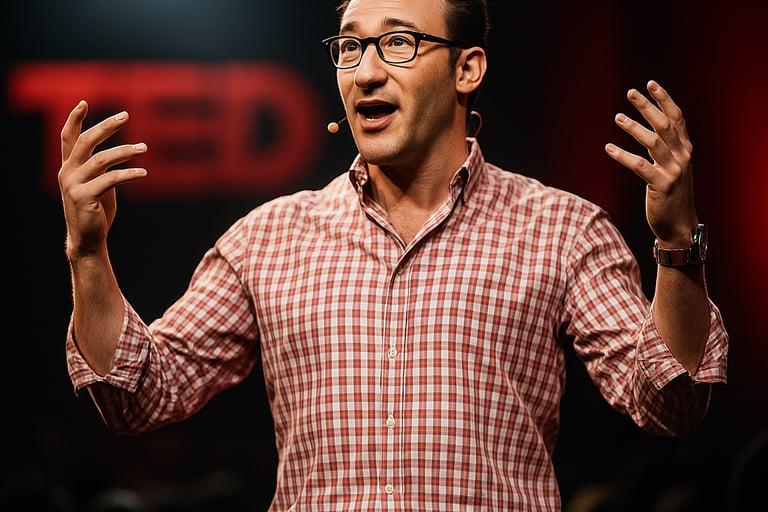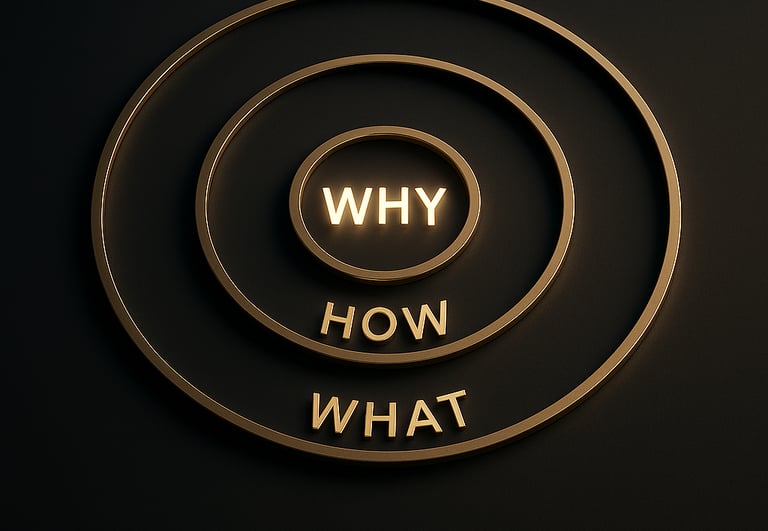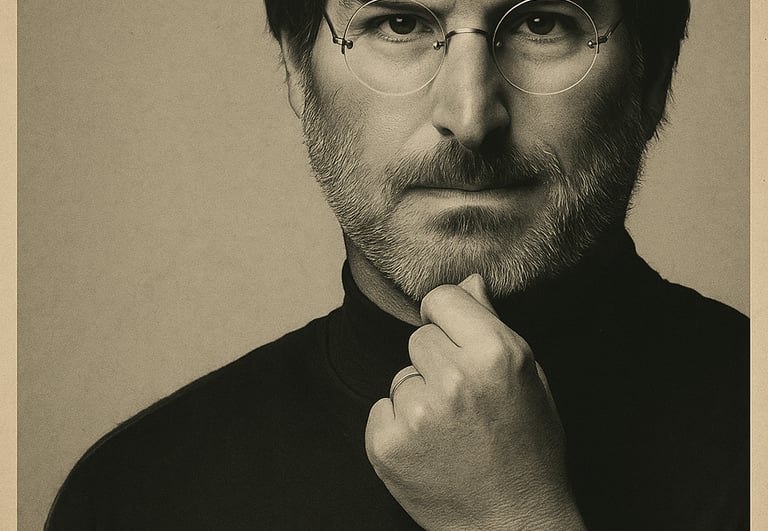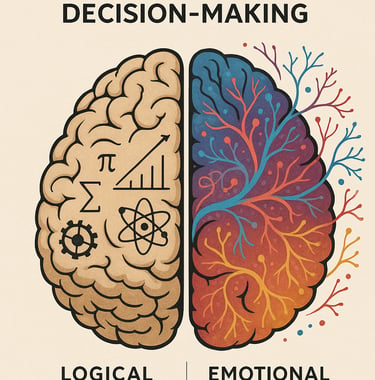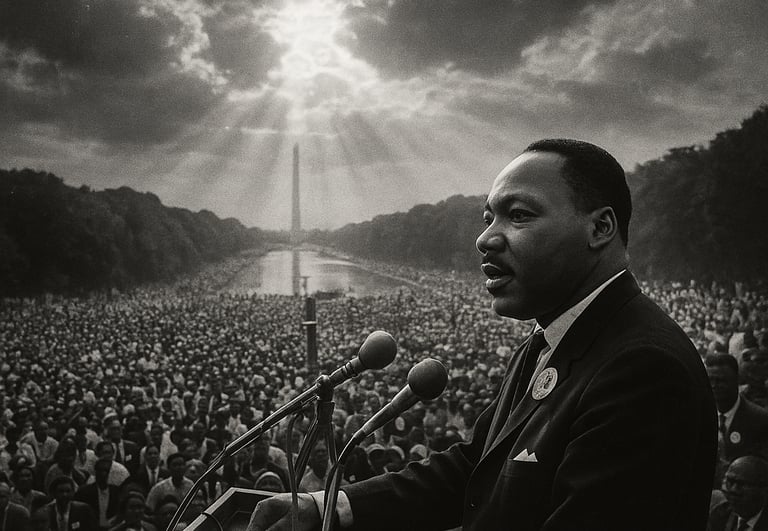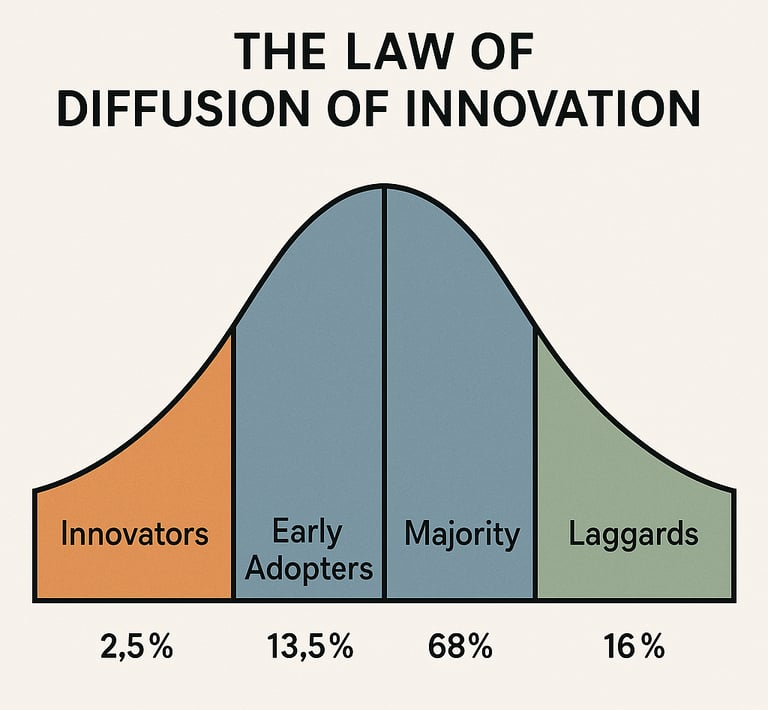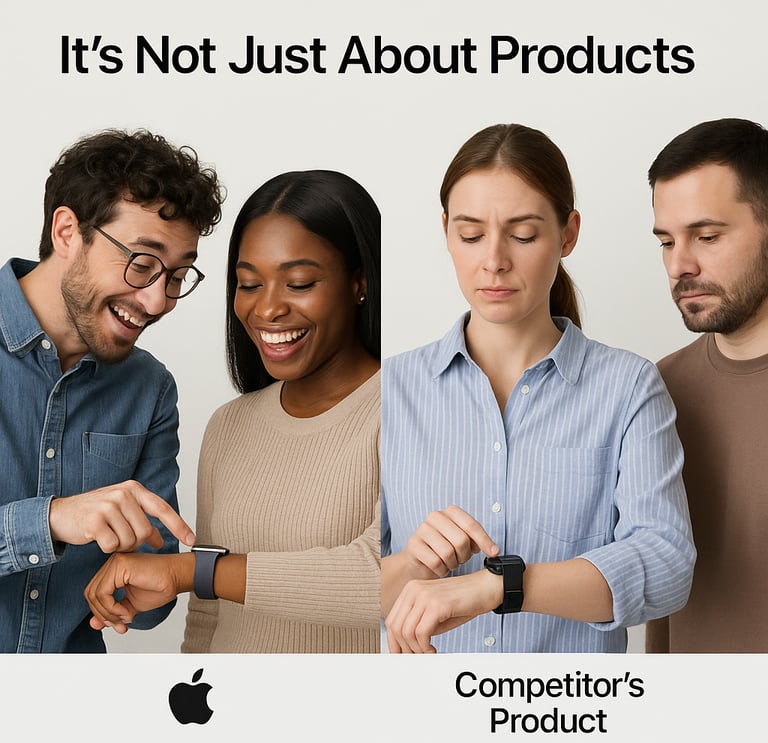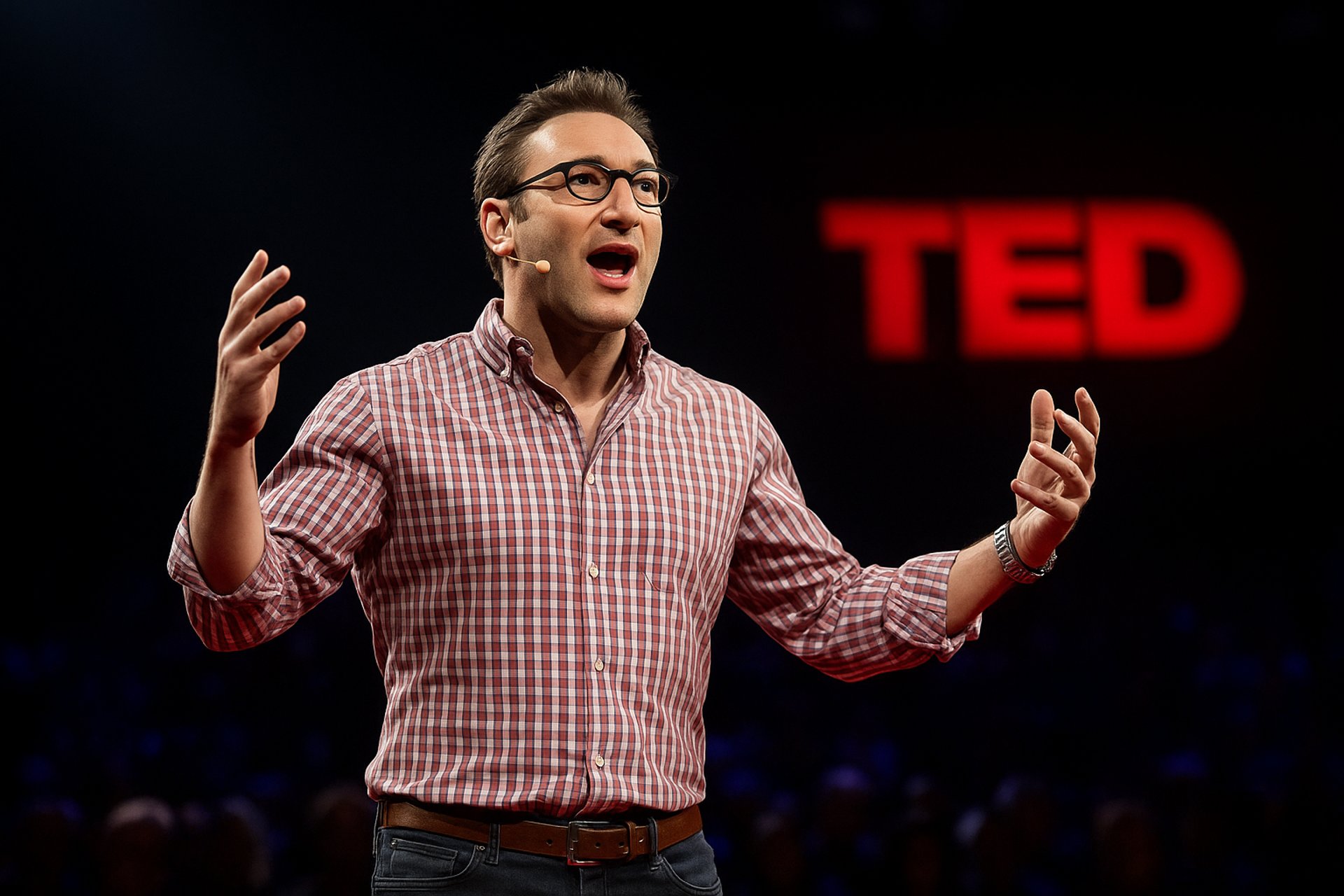
The Golden Circle: Simon Sinek’s Revolutionary Approach to Inspirational Leadership
BOOKS
Robin Joyce
7/1/202511 min read
1. Introduction: Cracking the Code of Extraordinary Influence
In a world saturated with parallel products, services, and leaders, why do some individuals and organisations rise above the noise to achieve remarkable influence and loyalty? The answer lies in a deceptively simple, yet profoundly powerful concept developed under the leadership of Simon Sinek called "The Golden Circle". This is a framework that not just explain success, rather it provides a blueprint for creating movements, building devoted followings, and establishing brands that transcend their industries.
Let us imagine walking into an electronics store where dozens of computer brands sit side by side, all with comparable technical specifications. Yet one commands premium prices and inspires its customers to buy their products. This paradox, repeated across industries and throughout history, reveals a fundamental truth about human psychology that Sinek uncovered through years of his research. The Golden Circle not just help us understand why Apple can successfully sell phones, watches, and streaming services despite being a computer company, it shows how any organisation or leader can harness this same psychological principle and apply into his/her world.
Simon Sinek, usually described as “a visionary thinker with a rare intellect”, and a trained ethnographer, is fascinated by the people and organisations that make the greatest and longest lasting impact. Over the years, he has discovered some remarkable patterns about how people think, act, and communicate, and also the environments in which they operate at their natural best. Simon may be best known for his TED Talk on the concept of WHY and continues to share inspiration through his bestselling books, including global bestseller "Start with WHY". Let us deep dive into the concept of Golden circle and the power of WHY.
2. Decoding the Golden Circle: More Than Just a Communication Model
At first glance, the Golden Circle appears pretty straightforward having three concentric circles labelled WHY, HOW, and WHAT. But beneath this simple visualisation lies a radical rethinking of how we communicate, lead, and build organisations. The outer “WHAT” circle represents the products or services a company offers, the tangible things everyone can see and describe, and most individuals and organisations can clearly articulate what they do. The middle portion of the circle that constitutes the “HOW”, contains the unique value proposition or the differentiators that set an organisation apart. But the magic happens in the inner “WHY” circle where the purpose, cause, or belief that inspires the action, that only a few organisations truly understand or communicate.
“By ‘why,’ I don’t mean to make a profit.’ That’s a result,” Sinek explains. “By ‘why,’ I mean: What’s your purpose? What’s your cause? What’s your belief? Why does your organisation exist? Why do you get out of bed in the morning? And why should anyone care?”
2.1 The Power of Starting with Why: Case Study
According to Simon, most organisations operate and communicate from the outside to inside (from What to How to Why). They start by describing what they do ("we make great computers"), then may explain how they are different ("with beautiful designs and intuitive interfaces"), and only occasionally touch on why they exist (the Genz answer would be “to make money and break the middle-class trap"). This conventional approach might seem logical, but Sinek discovered that it is precisely the opposite of this flow (From Why to How to What) that most inspiring leaders actually think and communicate and highly successful organisations operate.
Simon illustrates the power of “Why” with a beautiful and powerful example: Apple Computers.
If Apple were like most companies, their message might sound like this:
“We make great computers. They are beautifully designed, simple to use, and user-friendly. Want to buy one?”
Well, to an extent, not very inspiring. But here is how Apple actually communicates:
“Everything we do, we believe in challenging the status quo. We believe in thinking differently. The way we challenge the status quo is by making beautifully designed, simple-to-use products. We just happen to make great computers. Want to buy one?”
Simon asks the question; do you feel the difference? The answer is: Yes, I do. People don’t buy what you do. They buy why you do it. That is why Apple customers are not just buying products; they are buying into a belief. It also explains why Apple can sell not just computers, but phones, MP3 players, and even streaming devices with equal success. Their “WHY” drives loyalty, not just product functionality.
The story of Wright brothers also exemplifies the inverted approach. Have you ever heard of Samuel Pierpont Langley, the better-funded, better-educated, holding a seat at Harvard, worked at the Smithsonian, extremely well-connected, and had all access to top talent, focused on being first to achieve powered flight. He was in the pursuit for fame and fortune (the WHAT), while lacking a compelling “WHY.” Orville and Wilbur Wright were driven by a deeper belief (the WHY) that solving manned flight would change the world. They had none of what we consider to be the recipe for success. They had no money; they paid for their dream with the proceeds from their bicycle shop. Not a single person on the Wright brothers team had a college education, not even Orville or Wilbur. And The New York Times followed them around nowhere. The difference was, Orville and Wilbur were driven by a cause, by a purpose, and by a belief. This fundamental difference in the mindset among Samuel Langley and Write Brothers did not only affect their motivation, but it transformed how they led their team, approached problems, and ultimately achieved what others could not.
“The goal is not just to sell to people who need what you have; the goal is to sell to people who believe what you believe. The goal is not just to hire people who need a job; it is to hire people who believe what you believe. I always say that, you know, if you hire people just because they can do a job, they will work for your money, but if they believe what you believe, they will work for you with blood and sweat and tears”.
3. The Neuroscience Behind the Magic: Why This Works
The Golden Circle’s power is not just philosophical, but it is all grounded in the tenets of Biology. Sinek’s model aligns perfectly with how our brains process information and make decisions. If we look at a cross-section of the human brain, from the top down, the human brain is actually broken into three major components. Our newest brain, our Homo Sapien brain, our neocortex, our rational and analytical brain, understands language and processes facts, features, and specifications, the “WHAT”. The middle two sections make up our limbic system, the older emotional brain, which has no capacity for language, handles feelings, trust, guts and decision-making, the territory of “WHY”.
When companies lead with WHAT, they are speaking to the part of the brain that just analyses but does not drive action. This explains why we can appreciate a product’s specifications intellectually but feel no compulsion to buy it. But when communication starts with WHY, it bypasses the analytical filters and speaks directly to the emotional centers that control behaviour. The rational brain then justifies decisions already made emotionally; a phenomenon anyone who has ever made an impulse buy and later invented logical reasons for it.
This neurological reality explains why Martin Luther King Jr. could inspire 2,50,000 people to gather in Washington without social media or email invitations. They sent out no invitations, and there was no website to check the date. Then how did he achieve that. Dr. King wasn't the only man in America who was a great orator. In fact, some of his ideas were bad. But he had a gift. He did not go around telling people what needed to change in America. He went around and told people what he believed. He did not lead with policy proposals (WHAT) or tactical plans (HOW). He articulated a dream (WHY) that resonated with people’s deepest beliefs about justice and equality. Those who shared his belief organised themselves, creating frameworks to spread the message because it was their cause too.
4. Law of diffusion of Innovation
What Apple computers, Martin Luther King Jr. and Write brothers exemplify is that if you talk about what you believe, you will attract those who believe what you believe. But Simon asks why is it even important to attract those who believe what you believe? He defines something called the law of diffusion of innovation as this concept aligns with the WHY-based approach in the following way through a bell curve: The first 2.5% of our population are our innovators. They innovate the products and have the first-hand access to the entire technology and product. The next 13.5% of our population are the early adopters. These are the people who stand in line for hours to buy an iPhone when they first come out. These are the people who spent 40,000 dollars on flat-screen TVs when they first come out, even though the technology is substandard. Which means the first 16% of the population are willing to take risks and try new things because they resonate with the products/company’s WHY. The next 34% are the early majority, and these people may not try something until someone else has tried it first, not because the product becomes better or cheaper as time passes, because it aligns with their (WHAT) values. The next 34% are the late majority, who dare to try when the technology is on the verge of extinction. The final, 16% of the population are the laggards and the only reason laggards buy touch phones is because they cannot buy rotary phones anymore. Simon articulates that to reach mass-market success, one must cross the tipping point, roughly 15-18% market penetration (that’s the combined percentage of innovators and early adopters). Once the tipping point is reached through innovators and early adopters, they drag the early majority, late majority and laggards reaching mass market success.
5. Transforming Theory into Practice: How to Apply the Golden Circle
Implementing the Golden Circle requires more than just rearranging your marketing strategy. It demands a fundamental reorientation of how you think about your organisation. The first and most challenging step is uncovering your authentic "WHY". This is not about crafting a clever slogan but discovering the fundamental reason your organisation exists beyond making money. For Patagonia, it is "We are in business to save our home planet". For Disney, it is "To make people happy". These statements are not mere marketing statements, but they are manifestos that guide every decision.
Once clarified, this "WHY" must permeate every aspect of your organisation. Hiring provides a perfect example. Conventional wisdom says to hire for skills and experience, but Sinek argues you should hire primarily for shared beliefs. Skills can be taught, but passion and alignment with your "WHY" cannot be manufactured. This explains why Southwest Airlines flight attendants will spontaneously break into a song or why Apple store employees often seem genuinely enthusiastic. They were not just hired to perform tasks but to embody a cause.
Communication naturally follows in this inside-out pattern. Consider two law firms: One leads with "We have the most experienced attorneys" (WHAT), while another begins with "We believe everyone deserves equal access to justice" (WHY). The first might attract clients shopping on price or credentials, but the second will inspire loyalty from those who share its belief. This principle applies whether you are crafting a website, delivering a pitch, or motivating your team.
6. The Pitfalls to Avoid: Why Most Golden Circle Implementations Fail
Many organisations stumble when applying the Golden Circle often because they treat it as a communication trick rather than an operational philosophy. The most common mistake is by fabricating a "WHY" that sounds inspiring but doesn’t reflect reality. Consumers and employees have finely tuned hypocrisy detectors that if your stated beliefs don't match with your actions, the disconnect will breed cynicism rather than loyalty.
Another trap is inconsistency. Your "WHY" can’t just appear in marketing materials. It must guide product development, customer service, hiring, and even the opportunities you pursue. When Howard Schultz returned to Starbucks as CEO, he didn’t just tweak the menu, but he retrained baristas to recapture the company’s original WHY of creating a "third place" between work and home. This comprehensive realignment saved the company from decline.
Perhaps the subtlest but most damaging error is impatience. Building a WHY-driven organisation takes time. Early adopters who share your beliefs will come first, followed gradually by the majority. Tesla did not try to convince everyone immediately. It first appealed to environmentally conscious tech enthusiasts who valued it's "WHY", then expanded as proof points accumulated. Trying to shortcut this natural diffusion process leads to diluted messaging and weak positioning.
7. The Ripple Effects: Beyond Business Applications
While Sinek developed the Golden Circle studying businesses and social movements, its applications extend far beyond. Educators find it to transform and motivate students. Nonprofits use it to attract passionate volunteers. Even parents use it to help articulate family values more effectively. At its core, the framework taps into universal human needs for meaning and belonging - the needs as relevant in community, organisations as in corporate boardrooms.
Consider how this approach might transform job searching. Most candidates lead with "WHAT" (their skills and experience), making them commodities. Those who (people like Elon Musk and Jeff Bezos) start with "WHY" (their beliefs and passions) stand out and attract employers who share their values. The same principle applies to dating profiles, college applications, or any situation where you want to attract the right opportunities rather than just any opportunity.
8. Conclusion: Leading a Movement, Not Just a Business
The Golden Circle ultimately reveals a profound truth that people do not follow products, services, or even leaders, but they follow beliefs. The most successful organisations don’t just satisfy needs; they represent causes that employees and customers want to advance. This explains why people wait in queue in front of Apple stores, and why Royal Enfield riders feel like family members, and why alumni from certain universities maintain lifelong connections.
Implementing this approach requires courage—the courage to stand for something beyond profits, to turn away those who don’t share your beliefs, and to let your "WHY" guide decisions even when it is inconvenient. But the rewards extend far beyond the financial success. Organisations that master this aspect could create legacies, transform industries, and build communities of passionate advocates. They do not just make sales, but they make history.
As you reflect on your own organisation or leadership, ask yourself: If no one bought your product or followed your lead because of what you do, but only because they believed what you believe, would anything change? If the answer is yes, you have identified work to do. But if your actions already align with your deepest beliefs, you are not just running a business or filling a role, but you are leading a movement. And that changes everything.
